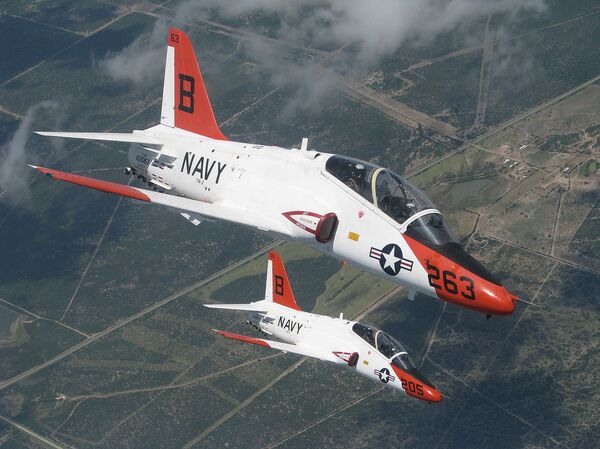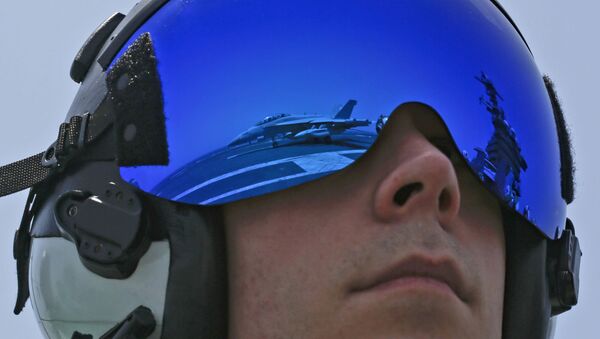Chief of Naval Air Training Rear Adm. Robert Westendorff told attendees of the Tailhook Association’s first virtual symposium that the Navy’s air training has suffered in recent years due to a slew of problems, including oxygen flow issues that triggered concerns of hypoxia, which have left the service without a sufficient number of pilots.
“We can’t just snap our fingers and produce those immediately. The time to train of a strike fighter pilot is about three years; due to the bottlenecks we’ve had, it's getting closer to four years,” Westendorff said on Saturday, as reported by Defense News.
“We’re doing everything we can to get that back down to the three-year mark. But the recovery plan is a three-year plan. And if we stay on track, it should take us about three years.”
Rear Adm. Fredrick Luchtman, commander of the Naval Safety Center and head of the Physiological Episodes Action Team, asserted in June that two root cause corrective action (RCCA) teams concluded that the physiological episodes (PE) experienced by Navy pilots in recent years were not due to contaminated air, but instead tied to a more complex series of issues.
“The bad news is that there’s no single causal factor that leads to physiological events,” he said.
The service first observed an increase in PEs, ranging from minor headaches to deaths, beginning in 2010. This trend continued until 2017, when both the T-45 Goshawk and F-18 fleets experienced their peak rates of PEs. Navy aviation training was suspended the same year, as several instructor pilots expressed safety concerns.

Luchtman explained that “even under benign conditions, the act of breathing highly concentrated air from a closed-loop system while encumbered by bulky flight gear in a cramped cockpit is not easy.”
“And in the dynamic environment of a fighter cockpit, we also add to the equation temperature variance, exposure to continual changes in Gs and pressure, all while managing an overwhelming amount of sensory input,” he highlighted. “All this amounts to increased what we call ‘work of breathing.’”
As time progresses, increased levels of work of breathing may trigger fatigue or “changes in breathing patterns, leading to inefficient gas exchange, and many of those symptoms look a lot like hypoxia.”
An ill-fitting and/or malfunctioning mask or irregular flight gear could also impact a fighter pilot’s breathing.
As for maintenance, the service recently moved to identify “sub-performing” parts and implemented life limits for aircraft environmental control systems. As of late June, the change had resulted in an 88% reduction in pressure-related PEs within older F-18s.

All F-18s have seen an overall 80% reduction in pressure PEs, following the installation of a “slam stick” device that records air pressure data from the cockpit and pairs with the Hornet Health Assessment Readiness Tool. The service also plans to install a system to monitor the cockpit and the Onboard Oxygen Generating System (OBOGS), logging oxygen concentration levels and cockpit pressure data in all Navy F-18s.
The RCCA teams also determined that the OBOGS in a number of T-45s were not taking in an optimal amount of air to purify, leaving the aircrew without as much oxygen as normal.
These T-45 engine issues “dramatically reduced” the aircraft’s availability in previous years, Westendorff noted on Saturday. However, the training program should be back on track following essential changes.
Luchtman claimed that the straightening out of a previously angled pipe between the engine and OBOGS, as well as a modification increasing the engine’s rotations per minute, “has resulted in a 96-percent reduction in the PE rate across the T-45 fleet since its peak rate in March of 2017.”
The service’s series of changes also comes alongside the anticipated incorporation of new aviation training technologies, ranging from handheld, mobile device-enabled virtual reality goggles to dozens of new training simulators at the Nevada-based Naval Air Station Fallon.


